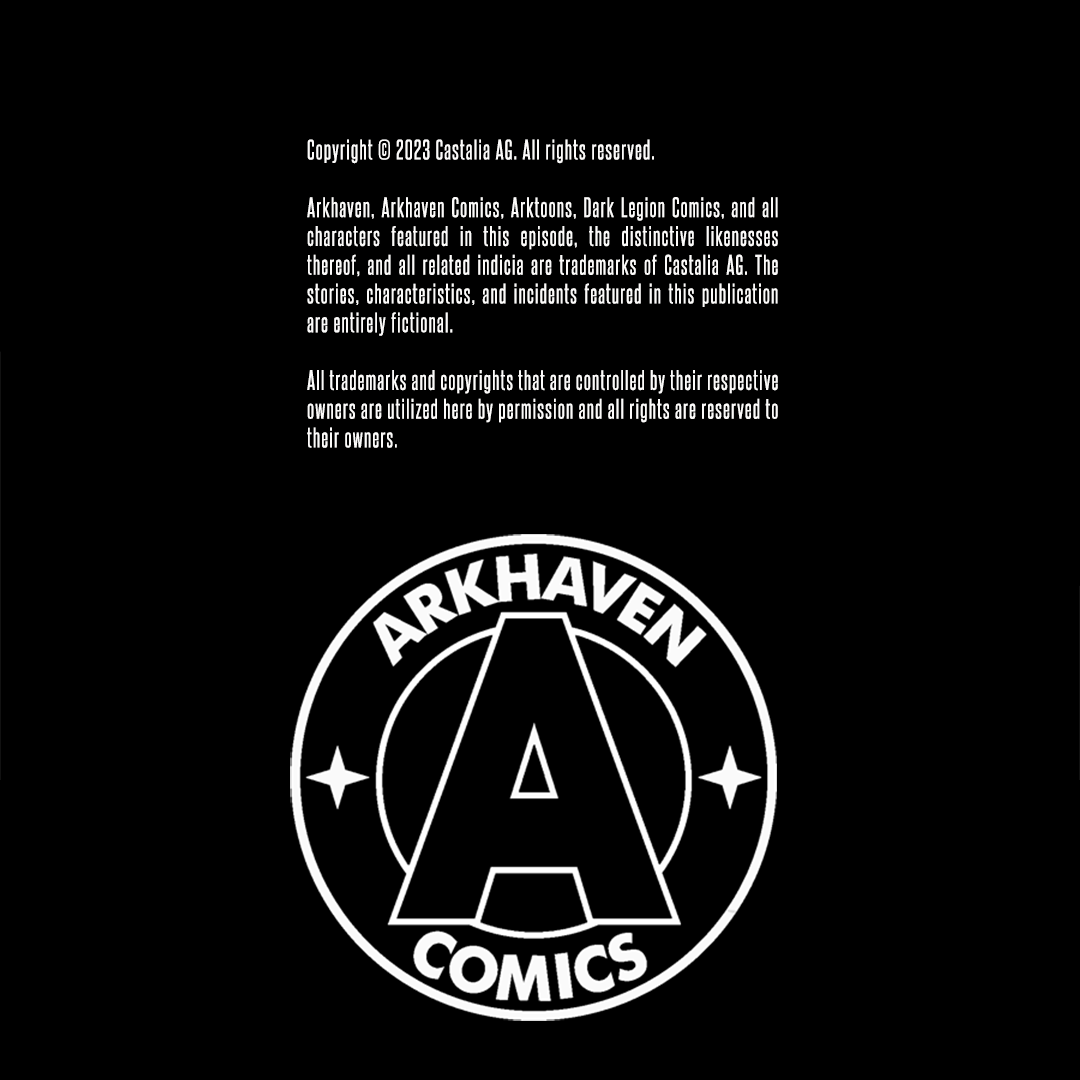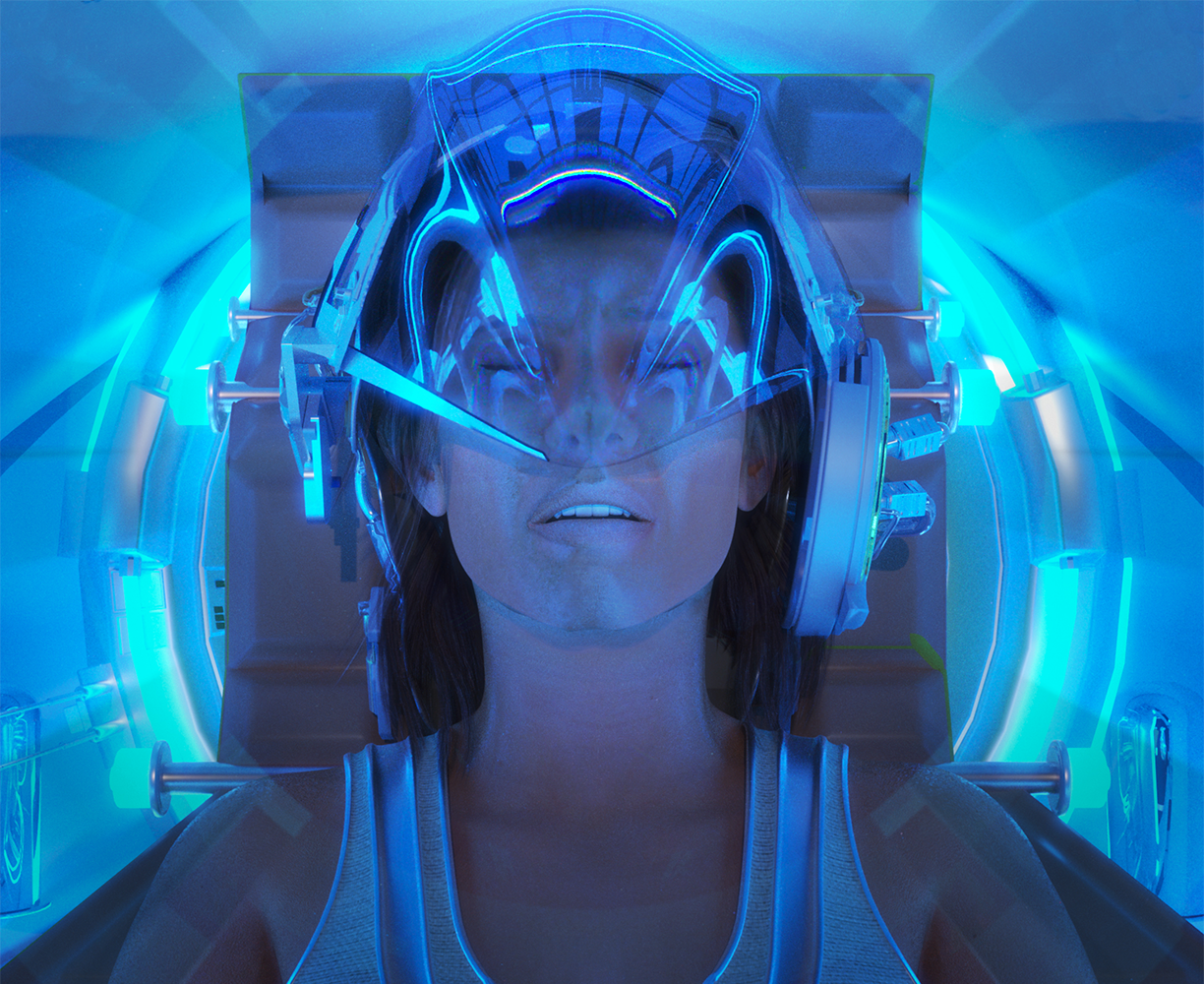Episode 17
The Technology of Space
The answer to the problem of four-dimensional limit concerning static gravitation was finally surmounted by the refinement of Heimian six-dimensional theory, which permitted the two-way conversion of electromagnetic energy into gravitational energy. Once anti-gravitational propulsion was developed for surface travel, a well-funded race to modify the Heim-Allen technology for the exploration of distant planets began.
—from “The Technology of Space” by Aric Pascal
AS DANIELA York stepped onto the bridge, escorted by Dr. Benbow, Captain Hull gestured toward the star window. “Your timing is good. You've come just in time to see our last view of this sector.”
“I take it that we're near hypertransit?”
“About 150 seconds.” Hull confirmed.
“It's always a disconcerting experience,” the doctor commented. “Personally, I find it a bit perturbing to see the universe suddenly blotted out before my eyes.”
“It's no different than turning out the lights in your cabin,” Hull answered.
“One could say the same of death. Symbologically speaking.”
“Ah, symbols.” Hull drew out the word to convey his skepticism. The doctor laughed.
“I think it's all right as long as I know the lights are coming back on,” said York.
“But how do we know they will?” The doctor gestured expressively. “Where are we when we're in transit? We don't even know where we are, let alone when.”
“We know how,” Hull interjected, “And as for when, we're somewhere between two points on the clock. That's all the knowledge we need.”
He smiled at York. “Our doctor suffers from an overactive imagination.”
“Someday the clock will stop,” Benbow replied gravely. The device attached to his belt vibrated. “If you'll excuse me, it's time for my morning appearance at sick call. Not that I'll have any patients.”
“I'll keep an eye out for the return of the lights,” York called after him.
When Benbow departed, Hull introduced York to Jan Galton, the navigator, and Gareth Borstad, a young officer who had the bridge watch. As they chatted, York sensed that her status had improved for the better, an idea that gained currency when Hull noticed Osborn hovering near the entrance and promptly dismissed him.
Galton, a thin, graying man with quick, intelligent eyes, noticed York's glance toward the star screen and said, “We're about here.” He jabbed a finger in the center of a group of stars displayed on the giant display.
“I can't tell one from the other,” she admitted.
“That's Blackett.” The finger moved to a faint star on the periphery of the tube. Galton continued, “The display is three-dimensional. Actually, this group of stars surrounds us. Blackett, as you know, lies far behind us.”
“Zero-seven-zero-two-four-six-four-eight-seven is target,” Borstad called out from their rear.
Galton glanced at his instruments, then nodded in satisfaction, “We're about to drop the veil, gentlemen! And, of course, lady.”
York turned towards the star window, suddenly conscious that the captain had moved alongside her. They were very nearly of a height. She had watched ships pass into hypertransit before, and yet, as the doctor had said, it always struck her as more than a little frightening.
The stars were a glory in the window—blues, white-blues, reds, yellows—almost every color conceivable. Except violet. There was only one star held that particular sheen, and that star was far away.
“Ten seconds,” intoned Galton, his voice firm and confident.
York fastened her eyes on a particularly brilliant red giant, so that the surrounding star field glowed and danced in the periphery of her vision. The stars appeared like little fireflies darting around the rims. The red giant gleamed alone, as if it had cut its own little cave in the sky and from it peered out into the vastness of the universe. One moment the red giant was there, flaming in its hole in the dark heavens, and then it blinked out. Simultaneously the myriad of lights dancing on the periphery of York's vision vanished, leaving her staring into endless blackness. The universe had become a gigantic, bottomless, black cave. The sight left her momentarily reeling.
Beside her, Hull took a deep breath, then exhaled slowly. “I realize it can be disconcerting, but in truth, I find this the most relaxing part of the voyage. Right now the ship needs neither captain nor navigator.” He looked at York, and a smile touched his lips. “We're traveling through an un-universe that requires no human hand. Indeed, nothing is capable of affecting our course until we reach the appointed time on the clock.”
“Can't you reset the clock?”
“During hypertransit? Yes, but it's quite a navigational feat. I can't say that we've ever had occasion to attempt it.”
“Where we set the clock determines how far we go, that and the direction we're heading at the moment when we enter into hypertime,” Galton explained. “Right now the clock is set at a few minutes over fourteen hours. That time and our course will bring us into Zero Seven Zero Two.”
“You're talking about a massive area,” York observed. “I mean, an entire subsector!”
“Of course. We speak of it as if it were a flat plain, but it's not. Far from it. Actually one of the stars, designated Seventy Ophiuci, lies twenty thousand light-years beyond the point where we will emerge.”
“Where will we emerge?” York asked. The navigator looked at the captain instead of answering.
“Near a star called Gelhart,” Hull replied.
“Any particular reason?”
Hull nodded. “That's as close as we could identify Rigel's position at the time of the distress call. Fortunately Gelhart is fairly isolated as stars go. It also has six planets, of which at least two could serve for emergency landings.”
“I can't imagine it being that easy,” York commented. “This puts the proverbial needle in the haystack to shame.”
“Finding the cruiser? We'll find her. I'm not bothered much on that score,” said Hull. “Unless you're wrong and there was an accident that left no ship left to find.”










































































